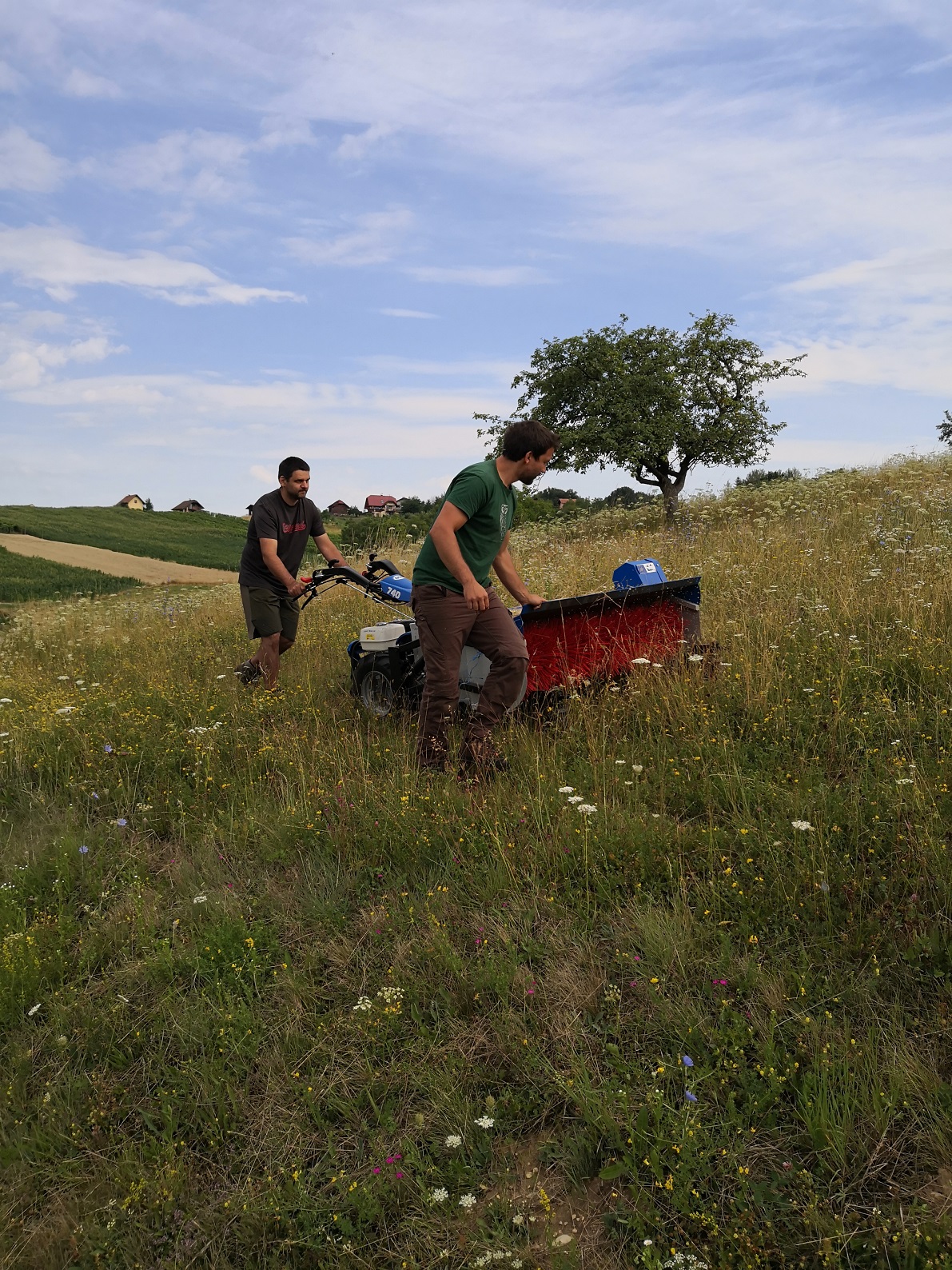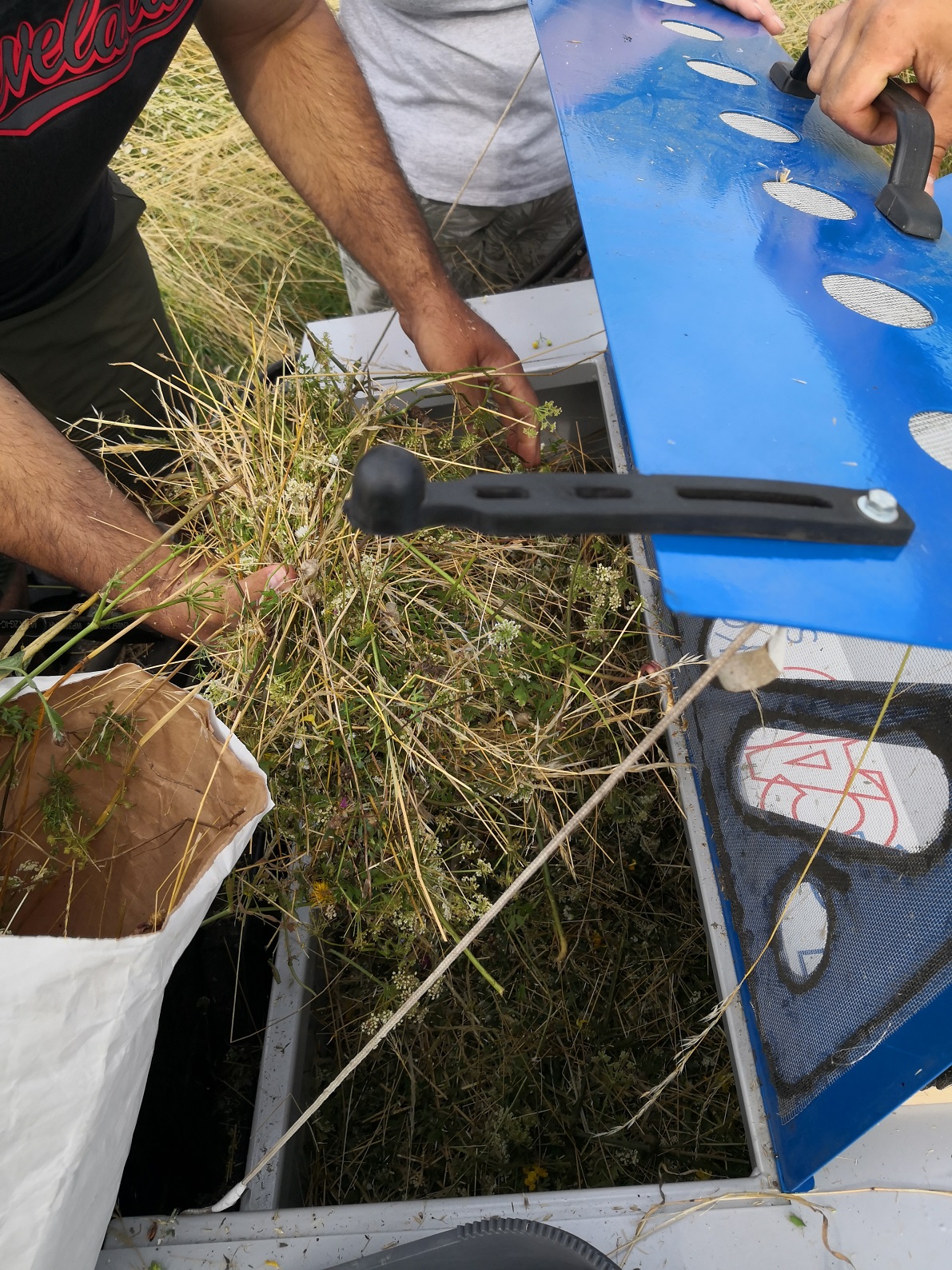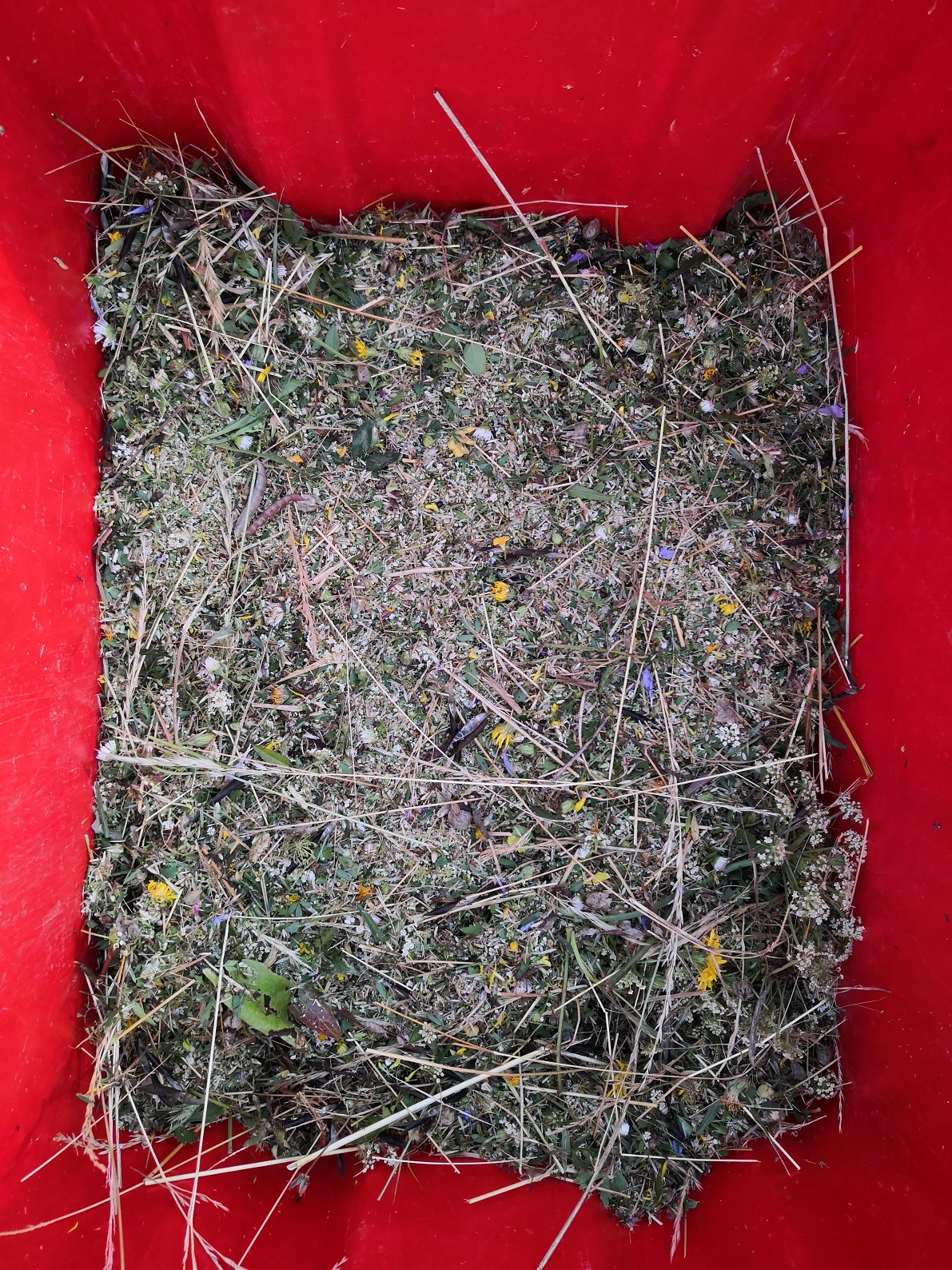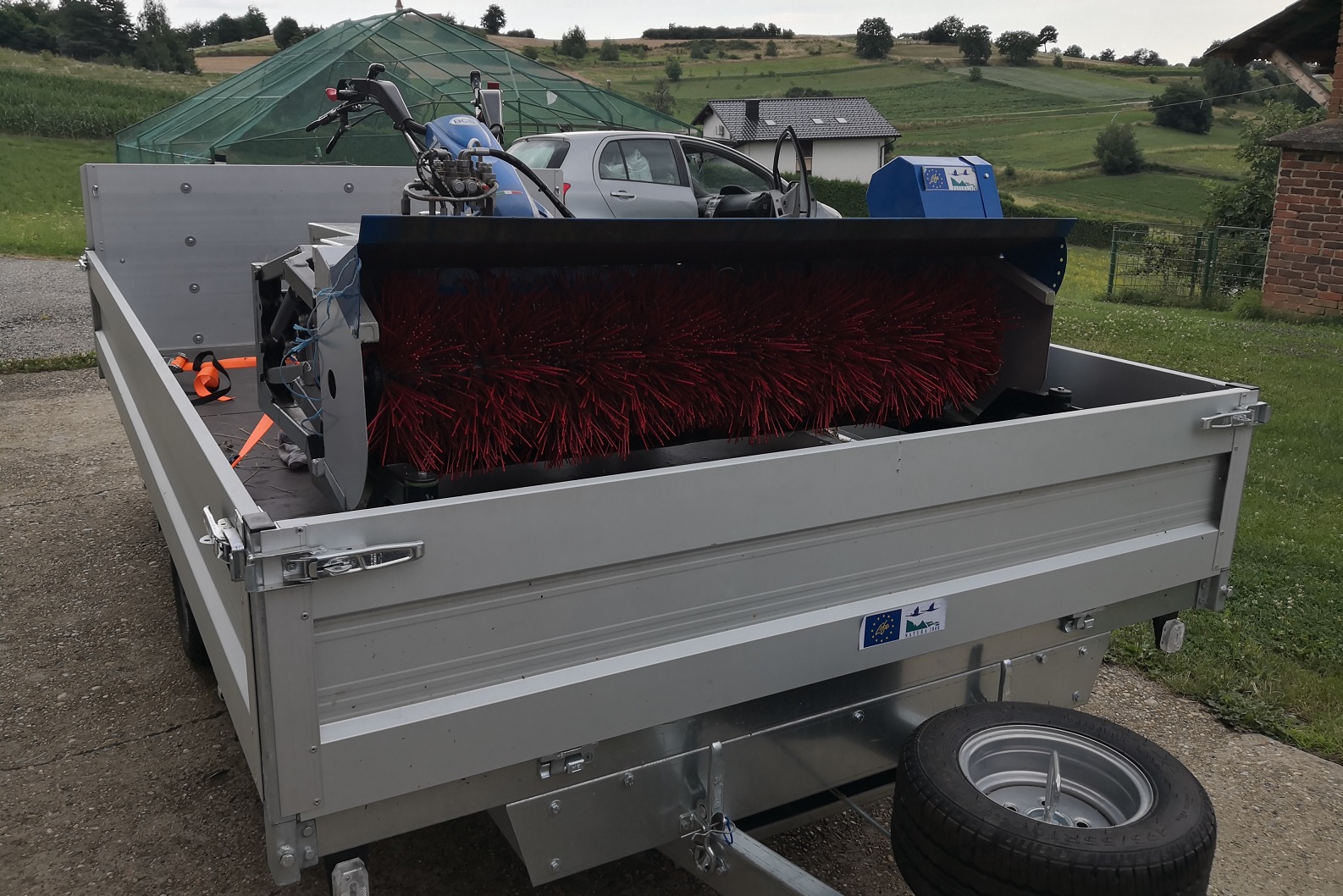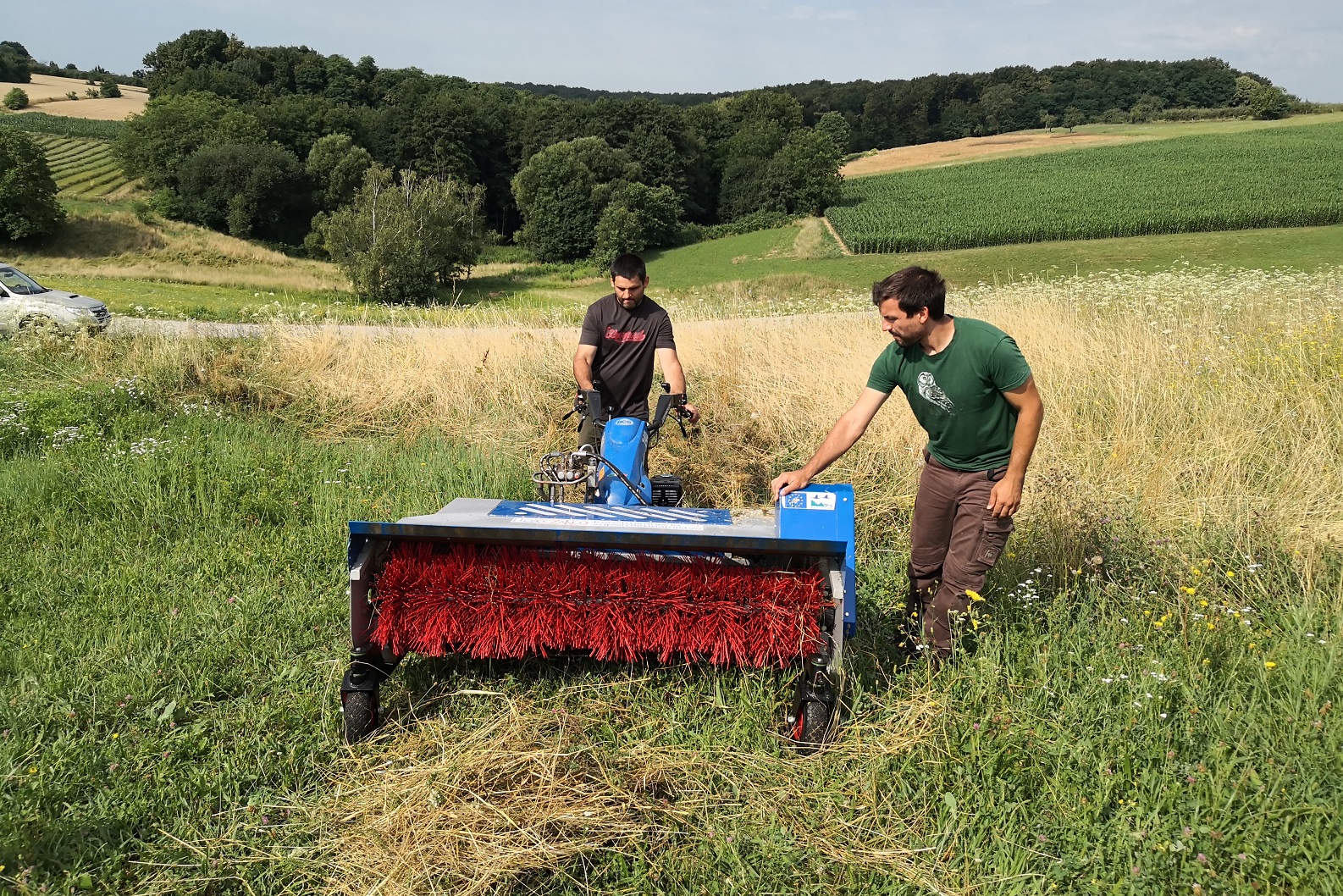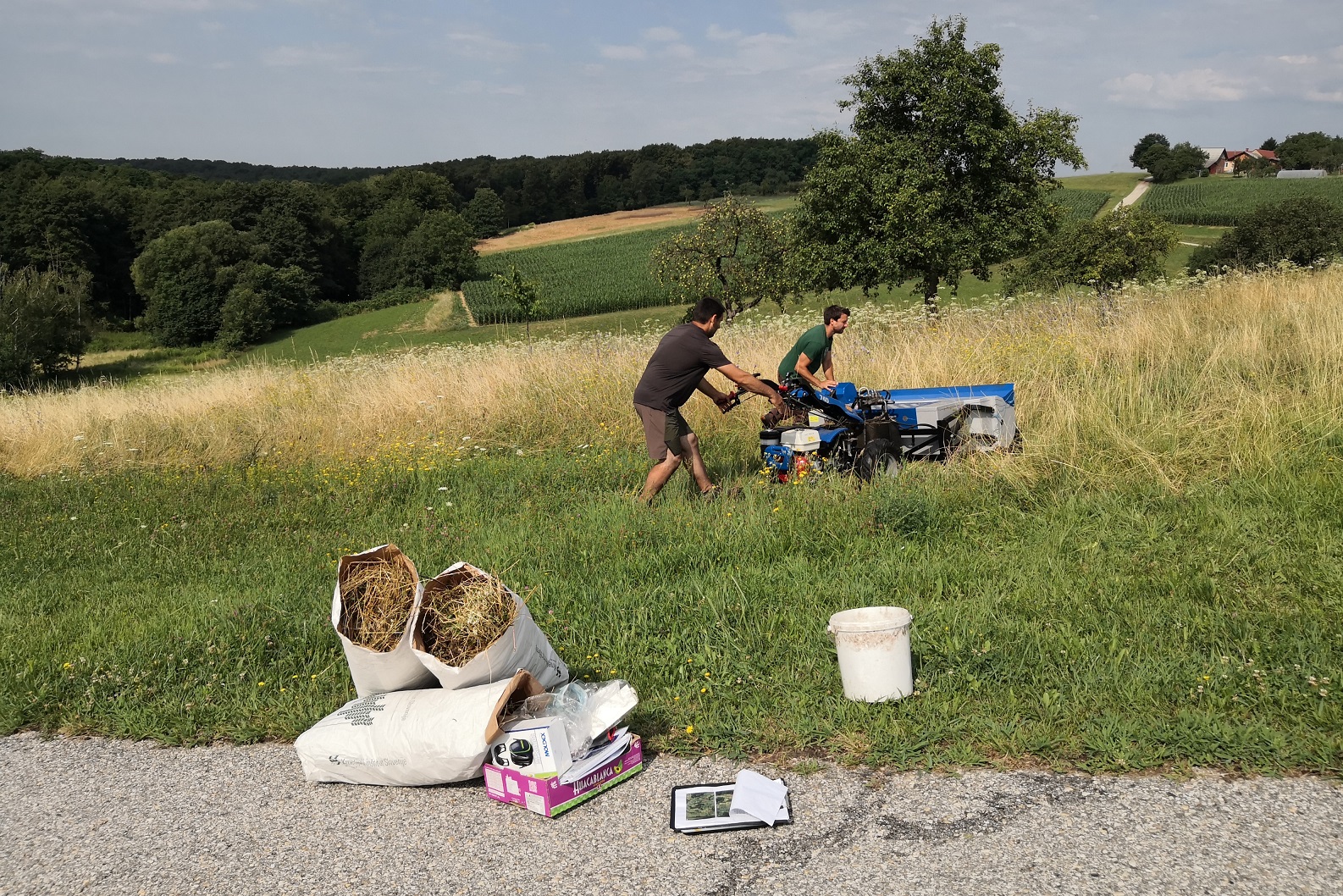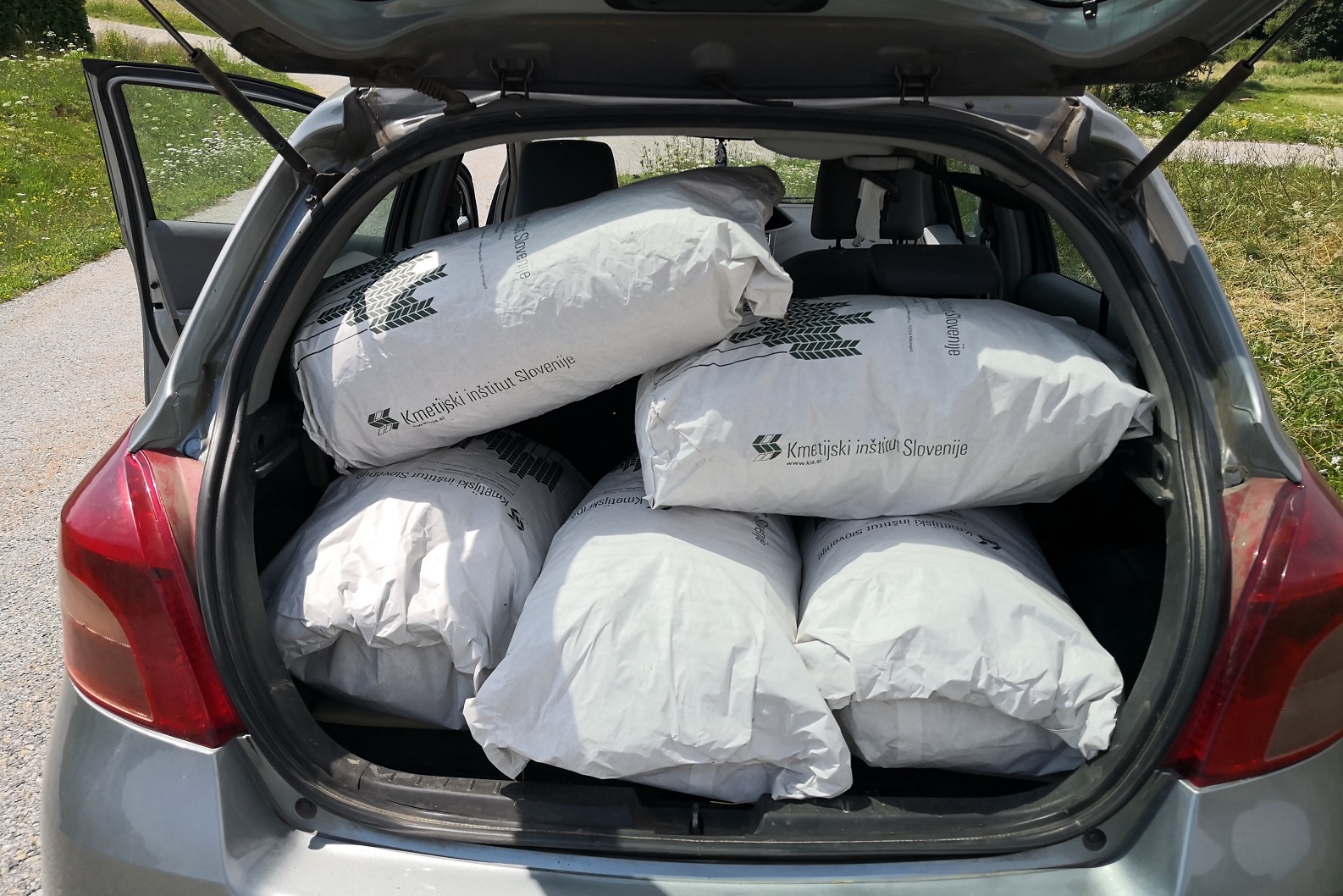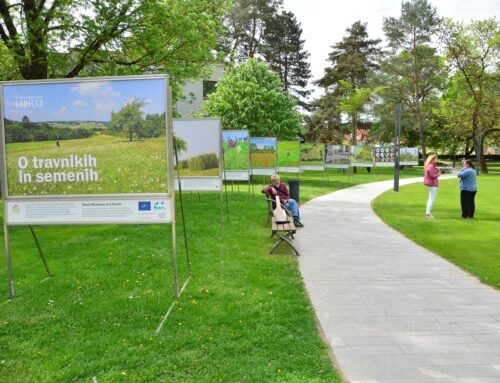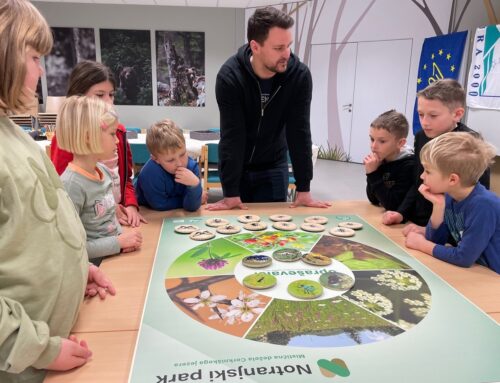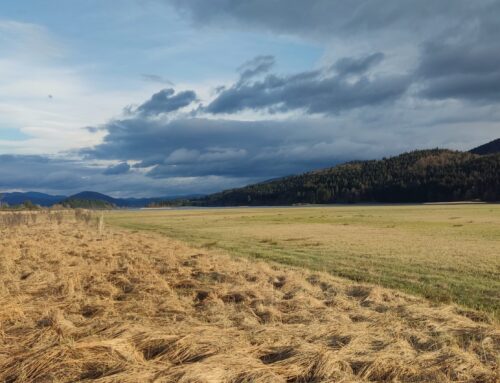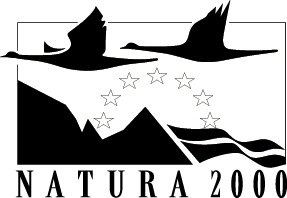In the past two months, the Life for Seeds project has been intensively collecting seed mixtures in dry orchid meadows of habitat type 6210 (*).
The action was carried out to restore species-poorer meadows of the same habitat type. The seed mixtures were harvested using a brush machine designed by the Faculty of Mechanical Engineering in Ljubljana, based on the experience of the Agricultural Research and Training Centre Raumberg – Gumpenstein (Austria) and the specifications of the Agricultural Institute of Slovenia.
The brushcutter was attached to a shear mower to ensure the survival of as many small grassland animals as possible (grasshoppers, blackbirds, butterflies, praying mantises, etc. ), while at the same time collecting as much seed material as possible.
We mechanically mowed the planned 12 ha or 27 meadows of habitat type 6210 (*) and harvested just over 280 kg of fresh seed material, which we transported to Grad Castle.
We brushed the meadows on two dates to get seeds from as many different grassland plants as possible, as they do not all set seed at the same time. This ensures the biodiversity of the meadow seed mix, which includes a variety of fescues, foxglove, little starchweed, true starvation, several species of cloves, purple loosestrife, rock foxglove, common purslane, crested wheatgrass, medium-sized thistle, common thistle, and many others.
At the same time, it was important that the meadows themselves were not mown by the time the seed mixes were harvested, as this was the only way to harvest seeds from more plants, especially those that flower later in the season.
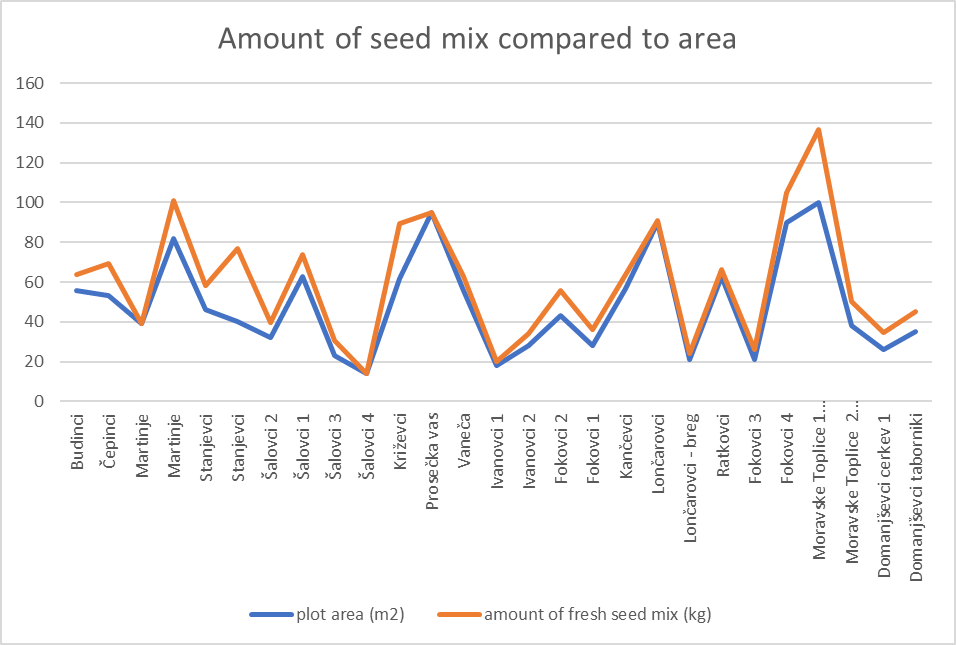
Amount of seed mix compared to area
The area of the meadow and the amount of seed material are correlated - more seed material was collected in larger meadows.
The seed material was dried for several weeks in special rooms in the Castle of Grad. We had to take care not to spread the mixture too thickly, as this made drying more difficult, and we had to stir it several times during the first few days of drying to prevent it from moulding.
When it was dry after about three to four weeks, the seed coats were removed and the material was then sieved by hand using a specially made sieve. The drier the seed, the easier it was to sow. The aim of the thinning was to remove all unnecessary plant parts (e. g. stems, leaves), thus reducing the amount of material. This will help us in the autumn, as we will be sowing manually in the species-poorer meadows of habitat type HT 6210 (*). We are less than a month away from sowing.
We faced a number of challenges: difficult to access plots, steep slopes, avoiding invasive species, the complex use of the brushcutter, which required upgrading machinery and improving working techniques. Nevertheless, we delivered on time and on target.


